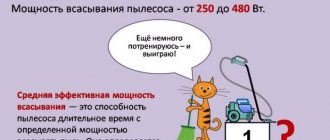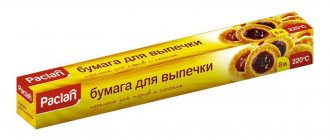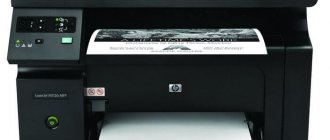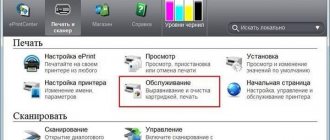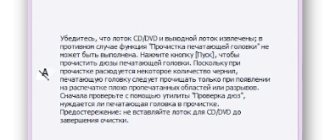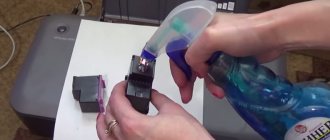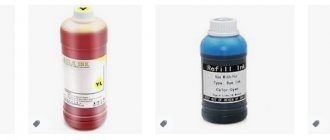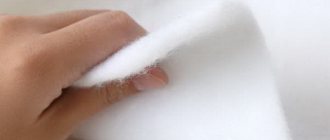Neat stickers, stickers and labels have become an integral part of our daily lives. Not everyone knows that printing such a picture is very simple on a regular printer, which is found in almost every home. Printer adhesive paper is an essential item in any office. With its help, you can very quickly and conveniently print any information (label, barcode, price tag, shipping label, address in a letter). The main feature of adhesive paper is that the printed information always looks neat, just like after being printed in a printing house.
What are self adhesive sheet labels?
Adhesive paper for printers is most often A4 size. The sheet is divided into a certain number of parts. Any of these parts can be used separately as a stand-alone non-adhesive. Using such paper in combination with a regular printer, it is not difficult to print important information and later stick it to the necessary item.
Adhesive paper is used with both inkjet and laser printers. Adhesive printer paper will allow you to stylishly decorate your presentation, making it truly bright. Such paper is visually divided into many shapes (symmetrical adhesive ovals or rectangles). The product is sold in packs or rolls. In stationery stores you can find both bright multi-colored paper and just white sheets.
Tip An inkjet printer requires more ink, but produces an image close to photo printing. Laser is more economical and less capricious, but its print quality is slightly worse.
Where is printer adhesive paper used?
Basically, self-adhesive is used for the following purposes:
- as stylish and bright labels for presentation and product release;
- in marketing: self-adhesive posters are used to advertise products; being in the fresh air, the paper does not lose its color, brightness and presentability;
- for sending letters: paper is used for mailings, gluing it to parcels or letters;
- for separating important documentation, folders and other archives; This method of application allows you to maintain order in the office;
- when labeling goods in stores or warehouses;
- at home: adhesive paper allows you to colorfully complement the design of the room, decorating the room with bright photos or drawings; Using labels is very convenient to sign the name of cans with twists.
Main advantages
Many people value the product for its practicality. This paper does not fade in the sun and is quite resistant to various damages. The design on the labels has clear contours and is of very high quality. Self-adhesive goes well with various types of ink. Works well with laser and inkjet printers, as well as copiers. The cost of adhesive sheets is affordable, so both ordinary buyers and company owners can afford to purchase them.
Self-adhesive printer paper greatly simplifies the workflow. In just one hour, you can apply hundreds of barcodes to it, indicate the cost of the product or the name of the product. This use of self-adhesive allows you to increase sales turnover and radically improve the productivity of a store or large retail enterprise.
This product is also capable of making the work of office employees as efficient as possible. Using adhesive paper saves time on signing envelopes, folders or other documentation. This use of self-adhesive allows employees to do more important things and not spend a lot of time on routine work.
Using this type of paper, it is not difficult to decorate corporate gifts, be it gifts for employees or souvenirs for partners and potential clients. Having made a beautiful drawing (with the logo and signature of the company) it will not be difficult to stylishly emphasize the beauty of a notebook, pen, calendar, etc. Such an idea serves as an additional reminder of it to the company’s clients and partners.
What are the paper sizes?
Basically, printer paper is produced in standard A4 format. If you compare self-adhesive paper with regular stationery paper, it will be different. The adhesive has notches and is also divided into labels, which allows the user to conveniently use it for their own purposes. Labels on paper come in round, rectangular, and other shapes. Adhesive paper is thicker due to the protective film on the adhesive side, and is usually glossy. These parameters must be taken into account when printing: you must select the appropriate settings for your office equipment.
Tip To prevent the image from being blurred, select a special or thick type of paper in the print properties: label, sticker, labels, cardboard, etc.
It is easy to find self-adhesive paper on sale with different sizes of divisions on one A4 sheet: two labels (size 210 x 148.5 mm), three stickers (size 210 x 99 mm), etc. The range of geometric stickers starts with 4 stickers and ends with 66.
Self-adhesive can be used on all types of copying equipment, as well as printers (inkjet and laser). Due to the fact that the adhesive base is heat-resistant, its unique features are not lost even after passing through the printer drum.
Self-adhesive printing paper
If you have a printer, then self-adhesive printing paper will allow you to produce stickers, labels, stickers, labels without contacting a printing house or other special companies, saving time and money.
Not everyone knows that any printer in the office or at home prints on paper with an adhesive side. You prepare the information and can quickly and without additional costs change it before printing the next batch.
It is especially profitable to buy self-adhesive printing if you need many small batches of various products. In this case, the label will look neat, no different from the typographic one.
Types of self-adhesive
Profiled stores offer a wide range of self-adhesive products:
- White opaque.
- Matte adhesive photo paper.
- Glossy. A picture on this basis is as close as possible to a photograph. When using this type of sheet when printing, it is worth using water-soluble ink instead of pigment ink.
- Colored paper, including bright neon self-adhesive, which is distinguished by the most saturated, luminescent shades.
- In rare cases, a silky-matte self-adhesive is found. It perfectly conveys shades and does not produce glare, which is the case with a glossy surface.
Different types of adhesive paper are suitable for solving certain problems, correspond to different cases, and differ in cost. Consider all factors when choosing paper to get the perfect result.
Advice Designers, as well as professional printers, will come in handy with rolled self-adhesive paper. Its size is 610 x 914 mm, and its density is 90 g/m2. It is easy to find both matte and glossy versions on sale.
Types of self-adhesive printer paper
Manufacturers are improving self-adhesive, making it more and more convenient to use. We offer to purchase paper:
- the required format;
- with or without divisions;
- white or colored;
- glossy, matte;
- universal, special (for laser or inkjet printing devices) or for photographs.
Self-adhesive paper will allow you to make stickers for mail, product labels, stickers with information and images, adhesive-based photographs, posters, marking elements and much more.
Manufacturers and cost
The price of the product will differ depending on the manufacturer, type of product, number of units (which come in a pack) and divisions of stickers. It is easy to find both domestic and foreign brands in the assortment of every stationery store. Well-known Russian brands include: “White Stork”, Lomond, “BoniVent”, “AVEST”, “Office-Leader”, “First Printing Company” and others. The cost of a pack of 100 sheets of medium gloss paper is 490 rubles. A pack of white matte paper for 100 sheets costs about 456 rubles. The price of a package for 50 sheets is from 270 to 370 rubles.
If you need products from European manufacturers: Mastertac (Poland), Index (Austria), UPM (Poland), Frimpeks (Turkey), MANTER (Spain) and others. The price of their goods is higher, but this is not always justified by the quality. A pack of 100 sheets costs on average 534 rubles, and a pack of 50 sheets costs 440 rubles.
Adhesives
The production of adhesives is the know-how of manufacturers of self-adhesive materials. In the production of such materials, glue based on rubber, silicone or acrylic is most often used. The range of large manufacturers includes several dozen different adhesives. Adhesives are divided into permanent and removable.
Permanent adhesives are characterized by high adhesive strength - removing a sticker with permanent adhesive leads to its destruction.
Removable adhesives are used in cases where it is necessary to remove the sticker without leaving traces, and in some cases, intact - for reuse. These can be price tags or instructions on household appliances, stickers on cars, advertising stickers, etc. An important quality characteristic of removable adhesives is the ability to remove the sticker without residual traces of glue.
In addition to permanent and removable adhesives, during mass labeling it is technologically advisable to use adhesives that make it possible to remove and re-stick incorrectly pasted labels. Such adhesives allow you to easily remove the label over a fairly long period of time (up to a day) and provide reliable permanent adhesion of labels for several days.
For mass-produced materials, there are universal adhesives suitable for many applications. In addition to universal adhesives, special adhesives have been developed for various applications and operating conditions of stickers.
Rubber-based adhesives are made using either a natural or man-made product. With the help of additives, it becomes sticky when mixed with other chemicals. This production technology was the very first to be invented and at the same time turned out to be very economical and efficient. In addition, rubber-based adhesive is resistant to temperature and ultraviolet radiation.
Acrylic-based adhesive systems are compounds of acrylate monomers with other compounds that are used for adhesive structures. It is known that when the production technology of acrylic glue changes, its chemical properties also change. Packaging materials based on acrylic adhesive are particularly durable in use and adhere perfectly to any surface. However, they initially stick worse than rubber glue. However, acrylic glue is more independent of temperatures, so it is used when it is necessary to create a durable connection.
The silicone-based adhesive system is created on the basis of inorganic compounds together with organic additives. It is this mixture that gives the compound its individual characteristics, for example, the possibility of long-term operation. Packaging materials based on silicone adhesive easily adhere to surfaces that have low and capacious static. This is what determines the high price of the product.
In general, the use of adhesive systems is possible in various temperature ranges: from –35 to 260 °C. In addition, all systems have unique “adhesion-cohesion” and “viscosity-elasticity” qualities, depending on the purpose of the desired material. Packaging tape (adhesive tape) is distinguished by the presence of a very important and unique characteristic - adhesion.
What it is?
Adhesion (from Latin adhaesio - sticking) in physics is the adhesion of the surfaces of dissimilar solids and/or liquids. Adhesion is caused by intermolecular interaction in the surface layer and is characterized by the specific work required to separate the surfaces. In some cases, adhesion may be stronger than cohesion, that is, adhesion within a homogeneous material - in such cases, when a breaking force is applied, a cohesive rupture occurs, that is, a rupture in the volume of the less strong of the contacting materials.
To measure the level of adhesion in a particular material, use the peel test according to the ASTM or PSTC method. Peeling during this test must be done either at a right angle or at an angle of 180°. Based on the test results, we can conclude how strongly the material adheres to the required substrate. Initially, adhesion is checked a few seconds after gluing. The test is then repeated 3 days (72 hours) after rejoining the materials.
Cohesion indicates the internal strength of the adhesive layer. In this case, the measurement is carried out using a “shear” test according to the same principle as for adhesion. It is known that there is a relationship between the two processes: the lower the cohesive force, the lower the resistance and backlash of the self-adhesive material.
Important nuances when choosing
When purchasing stationery for a printer, it is important to pay attention to the following characteristics:
- Paper quality. It is necessary to ensure that the sheets have smooth edges. Otherwise, labels may get stuck in the printer, resulting in damaged sheets.
- Die cutting quality. All paper-based elements must be well separated and arranged symmetrically, while the paper itself and, especially, its edges should not be cut through.
- Smell and quality of glue. When making self-adhesive, acrylic glue is used. Its cheap brands may emit an unpleasant odor during printing. It’s even worse if the self-adhesive peels off or curls as it passes through the printer. Therefore, the adhesive composition must be of excellent quality.
- Sheet density. The opinion that the higher the density of self-adhesive, the better its quality, is erroneous. The label should be elastic and easily follow the shape of the object on which it will be glued in the future.
Buying adhesive paper will solve many problems both at work and at home. When purchasing a product, it is important to pay attention to its quality, as well as its compliance with the assigned tasks.
Printable materials
Uncoated papers
Uncoated papers are super-calendered offset with a density of 70-80 g/m2. Rolled materials use a backing with a density of 62-65 g/m2 (without perforations), and sheet materials use 84 g/m2. The total (including the substrate) density of such papers reaches approximately 140-160 g/m2. This material is suitable for all types of printing (including risography and photocopying) and is used, as a rule, for non-raster (text plus solids) printing in one or two colors of inexpensive stickers on consumer goods.
Coated papers
Among coated papers, the most popular are papers with one-sided machine coating with a density of 80-90 g/m2. They are usually called semi-gloss. They successfully combine the ability to obtain a full-fledged colorful image with a relatively low cost. These factors determined the absolute leadership of semi-gloss papers in terms of consumption volumes. In their production, label paper is used for the printed layer, so the characteristics of the paper correspond to the characteristics of the most common label papers: gloss - 6065%, whiteness - 9095%. There are no special problems when printing on them.
Thermal paper
This type of material is included in a separate group due to its importance and large market volume. The printed layer of this material is paper with a special coating that darkens when heated (as in fax machines). Self-adhesive thermal paper is used in cases where it is necessary to print variable information (weight, cost, barcode) on stickers. The most common printing devices in this situation are matrix printers with heated heads, combined with or without measuring instruments (scales).
Papers without a protective coating are used in cases where storage and transportation of labeled packages is not intended. These are mainly stores where labeling is done immediately before sale. In places of mass labeling, especially of products such as meat, fish, cheeses, and gastronomic products, it is recommended to use thermal paper with a protective coating, since in these cases further storage and transportation of packaged products is assumed. The top protective layer protects the stickers from dirt, moisture and mechanical damage that impairs the readability of the barcode, the bottom prevents the penetration of glue and components of the packaging material. If it is necessary to label or store products at low temperatures or in conditions of condensation, it is recommended to use materials with special frost and moisture-resistant adhesives.
The characteristics of the protective layer usually include data on resistance to the following factors:
- temperature (24 hours, 60 °C);
- UV radiation (100 h, 500 lux);
- water (15 hours);
- vegetable oil (15 h);
- polyvinyl chlorides (15 h, 40 °C);
- alcohol (dropper, 96 percent ethyl alcohol);
- cheese (15 hours);
- milk (dropper);
- hand cream (15 hours).
In addition to the presence of a protective layer, the following characteristics of thermal paper are important:
- black print development temperature (7595 °C);
- maximum print speed (816 inches per second);
- image contrast after thermal printer;
- barcode clarity and squareness.
Special papers
As for special-purpose papers, first of all we should mention materials for stickers on wine bottles. The share of self-adhesive materials for these purposes is constantly growing. This is primarily due to less expensive labeling equipment and lower labor costs when changing from one type of label to another. For this reason, self-adhesive wine labels may be more beneficial for small bottling plants or for large wineries producing exclusive, gift or holiday products. Self-adhesive wine labels use pure cellulose or cast-coated papers, often embossed, and special adhesives that can be removed with an alkaline solution in standard bottle washing processes and are suitable for labeling wet and foggy bottles.
Among special-purpose papers, thin coated papers with a density of 6065 g/m2 are widely used, from which stickers are made on sharply curved surfaces (for example, ampoules in pharmaceuticals). Paper for such purposes should have low rigidity. For its production, special cellulose with very short fiber is used. In addition, a special permanent adhesive with increased stickiness is used.
Digital printing materials
This group usually includes materials (papers, films, foil) intended for various types of printers (matrix, laser, inkjet, thermal transfer and thermal printers) and copiers. Such materials are characterized by the use of thinner substrates (siliconized papers).
A number of materials in this group are oriented for printing using office equipment. Special materials are produced for inkjet printers, which allow obtaining a clear image outline and high resolution, as well as materials designed specifically for laser printers and copiers, in which the image is obtained by baking the powder. The main requirements for materials for laser printers and copiers are the possibility of their use in high-speed devices and resistance to heat when passing through the stove of the printing device.
Self-adhesive film
Self-adhesive film is a very popular material, indispensable for quick and inexpensive interior renovation. With its help, you can change the appearance of furniture, walls, doors, windows in any room beyond recognition, without resorting to the use of special tools for wallpapering. Thanks to its water resistance, self-adhesive film is an ideal choice for the bathroom and kitchen, and a huge range of colors (more than 500) allows you to use self-adhesive in a wide variety of interiors, in residential and office spaces, as well as for the manufacture of advertising products: exhibition stands, billboards and stickers. Printing on self-adhesive film is one of the most popular types of outdoor advertising, as well as an original way to decorate the interior with unique decor.
Self-adhesive wood-look film is available in almost a hundred options, replicating both familiar wood (pine, oak, spruce) and exotic expensive wood species. Patterns on the film can imitate stone, marble, fabric or ceramic tiles. The film can be matte or glossy, smooth or velvety, mirror or transparent.
There are films with a metallic sheen - they fit well into a high-tech interior, and self-adhesive film with a pattern or ornament will decorate any kitchen, nursery or hallway. Vinyl film can serve as a decorative finish, complementing other materials, or act as the main element, for example, to update a kitchen set - it’s much cheaper than buying new furniture.
To protect against too bright sun, self-adhesive transparent film is used on the windows. It can have embossed patterns and many texture options.
Of great interest is self-adhesive stained glass film intended for gluing glass surfaces. In it, colored fragments alternate with transparent ones, creating patterns that imitate stained glass. This film will serve as a wonderful decoration for a cabinet door or decorate a window, creating fancy colored highlights on the walls.
A wide range of self-adhesive borders will help you harmoniously fit the self-adhesive into the interior and place accents by combining all the objects covered with decorative film into a single composition.
Self-adhesive PVC film
Self-adhesive film for furniture and other surfaces is a material consisting of two layers. The top one is a layer of polyvinyl chloride on which the image is applied. The bottom paper layer is impregnated with special glue. When gluing, the paper base is removed, and the vinyl film is applied to the prepared surface, instantly adhering to it. You don’t need professional tools for gluing; a ruler, knife or scissors are enough.
The material from which the self-adhesive is made is very strong and durable and can withstand temperatures up to 80 °C. It does not contain substances harmful to health, so self-adhesive PVC film is safe for use in residential areas.
Using self-adhesive film, you can quickly and inexpensively give new life to a dilapidated cabinet, scratched kitchen set, table or window sill. For items subject to constant loads, such as countertops, a special thickened PVC film is produced - even more durable and resistant to mechanical damage.
You can remove dirt that inevitably appears on the surface of the self-adhesive film using warm water and a non-aggressive detergent. More complex stains can be removed with ethyl alcohol, but substances containing acetone can damage the design.
Printing on self-adhesive film
Modern technologies make it possible to apply any full-color image onto a special self-adhesive film for printing. This vinyl film is used for large-format printing of images, which are then pasted onto any smooth surface. This very popular type of outdoor advertising is very cheap and effective, and in addition, it provides an excellent opportunity to decorate the interior with any photographs to suit every taste. This self-adhesive film can be an alternative to photo wallpaper in a residential area or can be used to decorate shop windows and stands.
The advantages of films over papers are determined by a number of characteristic properties:
- long-term preservation of original qualities;
- possibility of obtaining transparent labels;
- resistance to external influences (moisture, scratches, chemicals, temperature);
- dimensional stability and strength;
- Possibility of disposal together with polymer packaging.
Of particular note is the PVC film intended for the production of protective labels. The problem of protection against unauthorized access has many aspects and technical solutions. For a number of purposes, it may be quite sufficient to use such stickers that cannot be removed without destroying them. A typical example is protecting computer units from being opened or replaced. A sticker made from such a film is perfect for such purposes, since it can only be removed by scraping, like paint. In addition to this film, synthetic material is often used to make seal labels.
Along with their advantages, such films also have disadvantages. These primarily include the difficulty of disposal and environmental pollution.
Self-adhesive PVC films are a multilayer material consisting of a polymer film, an adhesive layer and a backing. In order for the film not to cause difficulties during unwinding, plotter cutting and appliqué, all its components must be compatible and not enter into a chemical reaction with each other.
Among the methods for producing self-adhesive PVC film, two most common ones should be highlighted: calendering and casting.
Calendering
The manufacturing process is as follows: a mixture based on PVC granules, plasticizer, UV stabilizer and other components enters the extruder, where it is heated to a certain temperature. The dense liquid mass then enters the calender system and is rolled between them. Thus, due to the gap between the calenders and the speed of their rotation, the required thickness of the polymer film is achieved. High mechanical loads arising during the production of polymer film cause internal stress and maintain a tendency to return to the original shape. The last two calenders determine the type of surface (gloss, matte or texture). The film then passes through cooling rollers, enters the part of the production line where the adhesive layer and backing are applied, is cut and wound into a roll.
Depending on which plasticizer is used in the manufacture of self-adhesive PVC film - monomer or polymer, there are two types of calendered films: monomer and cast. Monomer films are used under normal operating conditions, mainly for the production of outdoor advertising on flat surfaces with a service life of no more than three years.
Casting
The manufacturing process is as follows: a mixture based on PVC granules, plasticizer, UV stabilizer and other components, heated to a certain temperature, enters the calender system, is rolled between them and enters the casting belt. Due to the gap between the calenders and the speed of their rotation, the required thickness of the polymer film is achieved. The film then passes through thermostats, cooling rollers, enters the part of the production line where the adhesive layer and backing are applied, is cut and wound into a roll.
The production of cast films is not accompanied by loads, so they are free from internal stress, resistant to atmospheric influences, and have no “memory”. Polymer films can be used on complex surfaces, for example for car wrapping. These films are weather resistant for a long time. Their service life is no more than 10 years.
For application to films, acrylic adhesives on various bases are mainly used. Based on performance characteristics, there are three main types of adhesive layers used in films: removable, permanent and universal.
A backing is used to protect the adhesive layer. It is usually made from kraft paper coated with silicone and polyethylene or transparent polyester.
Synthetic papers
Synthetic papers combine the advantages of films and papers without having their own characteristic properties. As a rule, these are materials based on polyolefin films, which can be printed on as on paper, that is, with conventional inks, which is achieved through the use of either special fillers or special coatings. From films they inherit resistance to chemicals, strength and dimensional stability.
Distinctive features of synthetic papers:
- widest scope of application;
- combination of advantages of films and papers;
- Possibility of printing using any printing process;
- the ability to use digital printing methods (laser and thermal transfer);
- resistance to external influences (outdoor use).
Factors affecting the quality of self-adhesive materials
During use, self-adhesive packaging materials are subject to mechanical force. The result of this may vary and depends mainly on the following factors:
- external surface texture - if the surface is rough and rough, it is better to choose a thick adhesive layer. In order to select the ideal thickness, several experiments are required above the surface. Otherwise, excess glue will cause the material to “crawl”;
- surface inclination angle - if the surface area is curved or elongated, you should choose a thin or elastic adhesive layer, since only this can ensure high-quality adhesion;
- degree of contamination of the substrate - when substances such as silicone, moisture or paraffin get on the surface, a thin but difficult to erase layer is formed, which prevents the self-adhesive paper from sticking. Dust and talc generally erase the surface contact area and absorb some of the composition;
- the presence of chemicals or solvents on the surface - the adhesive base in the presence of these irritants swells and softens, and the glue in this case does not work at all. Acrylic adhesive systems are able to withstand chemicals the best;
- ambient temperature - if the ambient temperature is low, the glue will harden, become brittle and the stickiness will disappear. But at elevated temperatures the opposite is true: the glue will melt, spread, and the resistance to cohesion will be close to zero;
- ultraviolet radiation - with prolonged exposure, materials become brittle, brittle and decompose very quickly;
- active influence of plasticizers (these include rosin, resins and ethers) - upon direct contact with the plasticizer, the adhesive on the film instantly becomes soft and very viscous. Hardening and transition to a working state will not occur;
- time that has passed since gluing - for the material you glued to attach for a long time, at least a day must pass.
- pressure on the surface - you need to firmly and clearly press the material onto the existing surface, as a result of which the necessary area for contact is formed and all the places where air bubbles have formed due to the connection will simply disappear.
